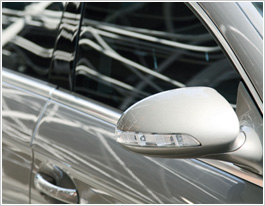

Plug-in automotive relays: Classics with a future

in the automotive market for electromechanical components, size matters. Even more important, however, are robustness and reliability. Along with versatility, these are the qualities that make conventional plug-in relays in-dispensable. So it’s hardly surprising that Song Chuan is steadily developing its automotive product range
Although the miniaturization of electromechanical relays in the automotive sector is continuing steadily, Song Chuan Europe's Vice Director Sales Stefan Rösch points out that "conventional plug-in relays still play a major role". In automobiles, plug-in relays are used to perform a host of different tasks. Their robustness, reliability and high switching capacities make them a natural choice for applications entailing exposure to high surge loads, vibration and voltage fluctuations. Many relays are housed in the engine compartment, where, despite difficult conditions such as moisture and widely varying temperatures, they still – as Rösch emphasizes – “need to work safely and dependably".
The list of tasks for which plug-in relays are typically used includes switching fuel pumps, fuel injection systems, vehicle lighting, heating control and air-conditioning systems, windscreen wipers, windscreen heating, electronic steering control systems and ABS control units. However, applications are also presented by retrofit facilities such as refrigeration systems for trucks, air-conditioning systems for buses, parking heaters, tailgate lifts for easy loading and unloading as well as crane control equipment.
The Song Chuan executive reports that because plug-in relays address such a wide variety of applications, the Taiwanese manufacturer "has continuously reviewed and enhanced its product range". The plug-in classics of series 871, 896 and 897 can handle temperatures ranging from -40 to +125°C. Thanks to the use of new contact materials and designs, relay contact resistance has been reduced and internal temperatures thus lowered – permitting higher packing density in relay and fuse boxes. In terms of switching capacity, the no-contact relays of the 897 series achieve 70 A/14 VDC. This version is also available in other designs. Both 897 and 896 series relays are also available as print relays for printed circuit boards. What is more, Song Chuan has extended its plug-in relay range to include type series 301, 303 and 898, which can be supplied with ISO 280 footprint. "These series will enable us to cater for needs across a large proportion of the market", asserts Rösch confidently. To ensure that the company profits from future growth of the automotive relay market, it "will be assigning a great deal of development capacity to the automotive sector".